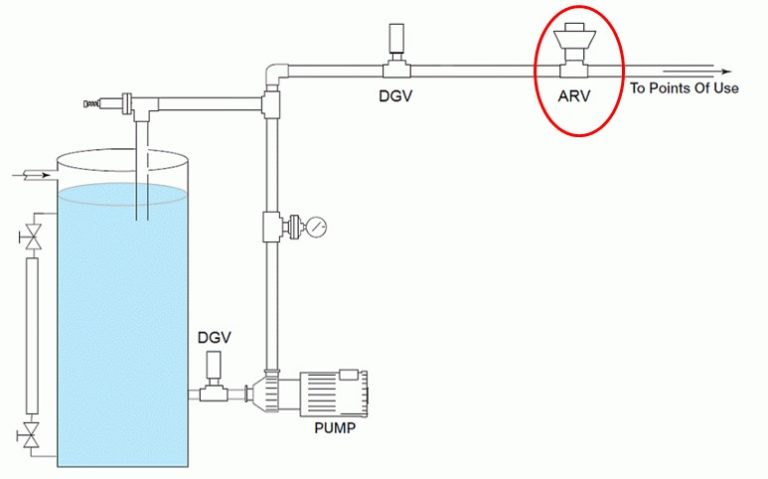The ARV is placed at the highest possible location in the piping system so that air will be continuously vented until the system fills with liquid.
Degassing: Continuous, Trace Amounts During System Operations
A Degassing Valve is also open when the system is depressurized, but due to its small vent orifice is not well suited to expelling a large volume of air at system start up. The DGV’s strength is the fact that it will open automatically – even when the system is pressurized – to periodically allow small amounts of gas to vent.
Once the gas vents, the valve automatically closes as long as liquid is present.
The DGV is placed at the highest possible location in the piping system where air/gas is most likely to accumulate.
The DGV on the suction side improves pump efficiency by eliminating trace amounts of gas that are commonly present in liquids that are prone to outgassing, such as sodium hypochlorite. Note that the DGV should be slightly elevated, and constantly flooded.
Further Things to Consider When Specifying Air Release and/or Degassing Valves
These questions will help you determine if an application requires one or the other…or in many cases, both valves:
If the application requires that a large volume of air be vented at one time, such as when the system is fired up in the morning, it calls for an air release valve. An air release valve should be installed on virtually every system, because sooner or later you have to turn the pump off. When you start it up again, you want to get all the air out so that the system will run at peak efficiency.
If the application is prone to outgassing or otherwise routinely forming small air pockets that must be vented throughout the day, it calls for a degassing valve. With ozone or sodium hypochlorite applications, a degassing valve on the suction side of the pump can significantly improve pump efficiency and longevity.
Because most piping systems will benefit from installation of an air release valve, the designer should consider using both the ARV and DGV in applications prone to outgassing.
Another important thing to note is that both valves need to be located at high points in the system, or wherever air or gas will routinely accumulate. Keep in mind that neither valve will “collect” gas as it passes by.
Source: Plast-O-Matic Valves, Inc.



